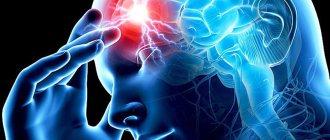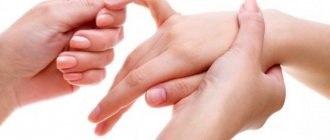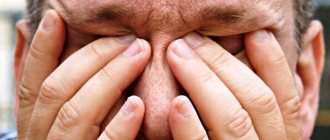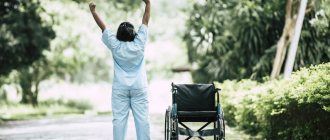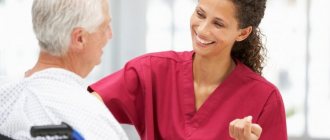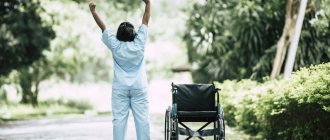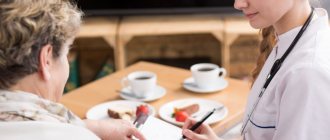In the event of pathologies associated with blood circulation in the brain, we are talking about a stroke. The reason for its occurrence is the narrowing of blood vessels, their partial or complete blockage. The blood is not able to deliver the required amount of oxygen to the brain, so some parts of this organ die (ischemic stroke) or hemorrhage occurs (hemorrhagic type of disease).
It takes at least three months to restore normal functioning of the affected organs. But even after the end of the recovery period, not all patients experience a complete recovery. Many people suffer from constant pain in their upper or lower extremities after a stroke. They can appear in various forms and be localized in different parts of the arms and legs.
Types of pain, causes of their occurrence
Pain in the arms and legs can occur either immediately after a stroke or after several weeks. In some cases, it begins to appear even after several months of the rehabilitation period. Pain in the arms and legs after a stroke is divided into two types: local and central.
The cause of local pain syndrome is problems with joints and muscles. It is caused by damage to the peripheral nervous system, has a relatively low intensity, and does not have a significant effect on the patient’s lifestyle.
Central pain occurs due to damage to the brain. He begins to misinterpret the signals coming from the body and mistakes even the lightest touch on the skin for pain impulses. The pain may:
- be of a paroxysmal or continuous nature,
- manifest as tingling or burning sensation,
- change intensity due to temperature changes, etc.
Intense pain prevents the patient from performing even basic self-care tasks.
Often the cause of pain in an arm or leg paralyzed after a stroke is contracture. It occurs when, as a result of an attack, the muscles of the limbs responsible for their flexion begin to dominate over those that control extension.
When you try to bend or straighten an arm or leg, a muscle spasm occurs, which manifests itself in the form of severe pain. If muscle spasms are not treated immediately after a stroke, the paralyzed limb may become rigid in a bent position and cannot be straightened.
Pain after a stroke: how to relieve it?
The appearance of pain after a stroke is associated with damage to the neural connections that transmit information from receptors to the brain. Let's talk about the types of pain and treatment methods
Patients who have suffered a stroke often report pain in the affected part of the body. Sometimes it’s a simple tingling, burning sensation that is easy to come to terms with. Sometimes it is a discomfort that cannot be ignored. And in some cases (6-10%), the pain intensifies so much that it becomes unbearable and significantly worsens the person’s quality of life.
There are two types of pain: central and peripheral. Each of them has its own etiology and characteristics.
Central post-stroke pain
It is neuropathic in nature, that is, painful sensations do not arise as a result of the impact on the affected limb, but due to overexcitation of the nerve cells of the brain. The symptom occurs due to damage to the thalamus, parietal cortex or thalamus opticus. Due to oxygen deficiency in tissues, the process of transmitting information from receptors to the brain is disrupted. He interprets the signals incorrectly: even in the absence of touch or any impact on the injured arm/leg, the person feels pain.
Nervous overexcitation, stress, overwork, and negative emotions aggravate the unpleasant sensations. The patient feels:
- numbness and tingling;
- pain that resembles electric shocks.
Peripheral pain
A stroke provokes a disruption in the transmission of nerve impulses between the limbs and the brain. To restore this function, the brain strengthens impulses, increasing muscle tone. As a result, the person feels pain.
The symptom develops during the period of active rehabilitation - starting 15-20 days after the brain attack. Every time he tries to move his arm or leg, he feels severe discomfort. At the same time, the appearance of such pain after a stroke is considered a good sign - this means that sensitivity is returning to the limb.
Peripheral pain is diagnosed by examining the clinical picture. Laboratory and hardware tests are also carried out: they study the state of the cerebral cortex and determine the foci of damage.
Headache after a stroke - what to do?
According to statistics, about 60% of patients who have suffered a brain attack suffer from headaches. The reasons can be different - from side effects of medications and hypertension to recurrent stroke.
Sometimes the pain takes such a pronounced form that a person loses self-control, becomes aggressive or, conversely, becomes depressed. Therefore, it is very important to undergo studies (MRI and CT) to find out the cause of the headache and choose the right medications to relieve the attack.
Muscle pain
After a stroke, the muscles of the legs/arms are in spasm. This occurs due to damage to the areas of the brain responsible for transmitting nerve impulses for flexion and extension of the limbs. Normally, these functions are balanced, but after a stroke, the muscles responsible for bending the arms and legs may become dominant. These phenomena are called contractures.
With contractures, a person cannot fully control the arm/leg, bend it, or lift it. And all this is accompanied by pain.
The condition requires immediate treatment, because there is a risk of developing an irreversible process when it will no longer be possible to force the extensor muscles of the limbs to function.
My leg hurts after a stroke - what to do?
Joint pain after a brain attack can cause no less discomfort than muscle pain. In addition, it must be differentiated from developing arthritis. In addition to pain, a burning and tingling sensation may be felt in a leg or arm paralyzed after a stroke. When you move your leg or touch clothing/shoes, the discomfort intensifies.
As mentioned above, pain in paretic limbs indicates that the recovery process has begun, and the doctor’s task is to alleviate the patient’s condition during this period.
How to reduce the frequency and severity of pain attacks
Since the causes of pain after a stroke are different, treatment methods also differ:
- Central post-stroke pain. The goal of treatment is to influence the areas of the brain that are responsible for subjective sensations. Here, ordinary analgesics will not help, since the problem is not local, but systemic. The maximum effect will be ensured by the simultaneous use of antidepressants and anticonvulsants. The duration of treatment is from 4 to 8 weeks.
- Peripheral pain. Muscle relaxants are also added to antidepressants and anticonvulsants - drugs that relax the muscles of the paretic limb, thus reducing pain.
- Headache. If they are caused by pressure surges, antihypertensive drugs and blood thinners are used. If the attacks of pain are rare and short-lived, a single dose of paracetamol may be enough. Remember: after a stroke, aspirin is strictly contraindicated.
Folk remedies
In addition to medications, traditional medicine can be used to relieve pain.
- Clover tincture. Recipe: meadow clover inflorescences (1 glass) are placed in a jar (1 liter) and filled with vodka. Leave for two weeks, filter and take 1 tsp. per day after meals. The course of treatment is 3 times for 30 days with a break of 10 days.
- Alcohol ointment. Mix two glasses of unrefined sunflower oil with a glass of vodka. Rub the mixture on the affected limb twice a day. You can use bay oil in the same way.
- Baths with medicinal herbs. Prepare a dry mixture of celandine, pine needles, rose hips, sage (3 cups in total) and pour boiling water in a three-liter jar. Leave for an hour, then strain and pour into a bathtub with bathing water. The course of treatment is 10 procedures.
Please note: all recipes are given for reference; before using them, you should consult your doctor.
Exercise therapy and massage
The rehabilitation complex for patients who have suffered a stroke must include physical therapy. This is a set of movements aimed at developing damaged limbs, relieving muscle spasms and improving joint mobility.
Rehabilitation exercises should be performed regularly (daily) and with sufficient intensity. From time to time it is worth increasing the number of repetitions in order to give a feasible load on the limb. You need to start with 30 repetitions, gradually increasing to 50.
Exercises are performed lying down:
- bend and straighten your arms at the elbows;
- bend your arm at the elbow and then extend it above your head;
- straighten your arms above your head and spread them to the sides;
- alternately bend and straighten the hands;
- clench fists;
- rotate your thumbs;
- extend your arms along your body and then raise them;
- bend and straighten your knees and feet;
- move your feet clockwise and counterclockwise.
Massage is indicated for muscle hypertonicity, which is often observed in patients who have suffered a stroke. It is necessary to influence both the affected and healthy parts of the body at the same time.
Important: you should not start massage immediately after an ischemic stroke - you need to wait at least a week.
The course of procedures is 15 sessions (one per day), after which they take a break and repeat the course one or two more times. If pain in muscles or joints is severe, the procedure should be postponed until the patient feels better.
The intensity of the impact should be minimal at first, with a tendency to increase. The same applies to the duration of the massage session. There should be no pain during the procedure.
Prevention of pain after stroke
It is difficult to prevent the development of pain syndrome, but it is quite possible to reduce the severity of its manifestation. To do this, the patient should not:
- take hot baths;
- allow pressure from clothing, belts, or braces on the affected part of the body;
- walk independently if your legs are not yet strong enough.
While sitting, place a soft pillow/cushion under the affected leg or arm so that it does not hang in the air. If possible, it is necessary to use devices for paretic limbs - bandages, supports, crutches.
_____________________
Pain after a stroke is an unpleasant symptom that worsens the quality of life. It can and should be fought with the help of competent doctors, medications, exercise therapy and massage. The main thing is to support a person during this difficult period, instill in him optimism and confidence in a speedy recovery.
Treatment methods
To understand what needs to be done if an arm or leg hurts after a stroke, to determine treatment tactics, a differential diagnosis is first carried out. This may include:
- neuroimaging (computed tomography and MRI);
- taking anamnesis;
- various instrumental and laboratory studies.
Based on the clinical picture obtained from the diagnostic results and taking into account the individual characteristics of the patient’s body, appropriate treatment is prescribed. This may include:
- physical and drug therapy,
- therapeutic exercises,
- massage and other methods of eliminating pain and its causes.
If pain is felt in one leg or arm after a stroke, anticonvulsants and/or antidepressants are prescribed. To eliminate increased muscle tone in the limbs during peripheral pain, in addition to taking muscle relaxants, the doctor may prescribe the following procedures:
- physiotherapy,
- exercise therapy,
- massage.
It is also recommended to change your body position regularly. You should not self-medicate. If discomfort or pain occurs, you should call a doctor at home. Determining the treatment method is the prerogative of a specialist.
Swelling: causes and solutions
Some patients have swelling in their paralyzed leg after a stroke. This phenomenon is explained by the fact that this disease negatively affects both hemispheres of the brain, disrupting the functioning of all body systems. The genitourinary system and kidneys are no exception. Violation of their proper functioning leads to additional problems in the form of:
- seizures,
- swelling,
- involuntary urination,
- disturbances of water and electrolyte balance in the body.
The paralyzed leg swells immediately after the attack. Unilateral swelling can also be caused by thrombosis of the deep veins of the leg. If the patient does not receive the necessary medications in a timely manner, the stroke may recur.
Only a specialist can determine the cause of swelling and determine ways to eliminate it. Therefore, you should not try to solve this problem yourself. If it occurs, it is strongly recommended to immediately contact your doctor or make an appointment at the stroke clinic closest to the patient’s place of residence and strictly follow the recommendations received there.
Possibilities for restoring movements of a spastic hand after a stroke in the late period
Usually, in the first year after a stroke, the rehabilitation potential is maximized, subject to systematic training. Since we are talking about a spastic hand, at the macromotor level one can observe changes in the form of: adductor-abductor, flexion-extension movements, etc. Micromotor skills, as a rule, lag significantly behind, with the exception of clenching your fingers into a fist. As for voluntary unclenching, it may be completely absent. This does not mean that it does not exist at all. Sometimes the patient describes the straightening of the fingers as a spontaneous process, especially during morning awakening or yawning. This is where the “unclamping” ends. The question rightly arises: “Is it possible to perform a movement voluntarily if it exists involuntarily?”
So, why is there no finger extension? Without this important movement, the hand becomes non-functional. The whole reason is spasticity, when the fingers seem to freeze and the desired movement does not occur. “Pull out” (as patients often put it) the decompression is not an easy task, but it can be solved. The problem of spasticity can be effectively overcome only with an individual approach, and accordingly, it is incredibly energy-consuming for both the specialist and the patient. In addition, the result is not only unstable at first, but also distant in time. More often than not, after a year of rehabilitation, patients are exhausted, see no further improvement, and either stop exercising or spend less time exercising. They can also be understood, because why waste effort if nothing happens next. Hence the lack of mood, apathy, depression and so on in a circle.
If, after a year of rehabilitation measures, the hand does not hang like a “lash”, or the hand is not in severe spasticity, when significant effort is required to straighten the fingers, then not everything is bad and conscious unclenching is possible.
Here is an example of such a violation (before classes).
Achieving movement in the finger extensors requires a lot of hard work. This is a period of restorative learning, when movements appear not with the help of passive methods, such as current stimulation, massage, robotic therapy, but work with a conscious effort, the desire to feel, “catch” and consolidate the movement. This is a joint process between both the specialist restoring motor skills and the patient himself. From sitting in a chair in front of the TV, moving the healthy arm back and forth with the sore arm, or short five-minute exercises, the result is zero. Without proper motivation, nothing will work! It's better not to take it in the first place.
For a visible, sustainable (!) result, such as movement of the extensor fingers of a spastic hand, 3-5 months of hard work are required.
An example of movement restoration (after a complex of rehabilitation training).
The individual method I developed for restoring movements in a spastic hand has been tested many times on patients not only in the early period after a stroke or injury, but also in the late period. The video excerpts used as examples are the result of intensive work over 3-4 months. If the patient himself is motivated to systematically work with his hand, I suggest a free consultation. You can sign up by contacting the Stimul mobile rehabilitation service.
Ergotherapist Tsygankov Roman Valerievich
